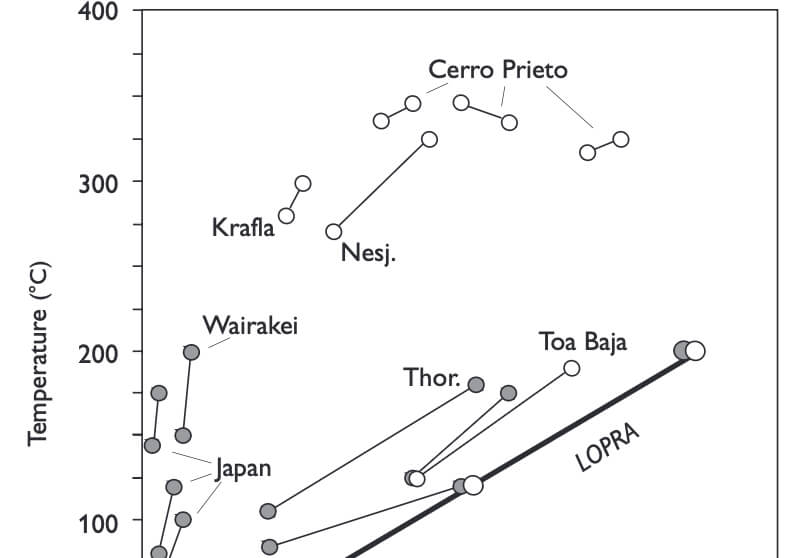
How to Cite
Share
Abstract
The sequene of secondary minerals that are reported for the Lopra-1/1A well records progressive zeolite facies to prehnite–pumpellyite-facies mineral progressions consistent with those of other well-studied hydrothermally altered rock sequences. Detailed comparison of the calc–silicate (zeolites and prehnite) mineral distributions of the Lopra-1/1A sequence with those from other regions indicates that this sequence exhibits consistently longer down-hole intervals for secondary mineral species than reported elsewhere. When compared to measured down-hole temperatures reported in other hydrothermally altered regions, the results suggest that the Lopra-1/1A mineral progression formed under conditions typical of low temperature hydrothermal systems that form shortly after eruption of thick basaltic piles. Maximum temperatures achieved at the 3500 m level of the well were at or below 200°C. The implied geothermal gradient was less than 50°C/km. An analysis of prehnite – fluid composition relationships was also conducted in order to determine if results compatible with the paragenetic sequence study could be obtained from thermodynamic constraints. In this case, the limiting temperature for prehnite formation in equilibrium with albite–quartz–calcite–laumontite (the mineral assemblage at the bottom of the hole) was determined for a range of fluid compositions. The resulting calculations suggest temperatures of formation of prehnite in the range of 140°C to 205°C, a conclusion which is broadly consistent with those reached from study of the paragenetic relationships. Comparison of these results with other studies of palaeogeothermal gradients of the North Atlantic margins suggests a consistent pattern in which relatively low geothermal gradients persisted in the Palaeogene rift basin.
How to Cite
Share
Downloads
Editors: James A. Chalmers and Regin Waagstein
The Faroe Islands in the northern North Altantic consist primarily of Palaeogene eruptive volcanic rocks. Two research boreholes were drilled in 1980 and 1981 on the islands, the deeper of which, Lopra-1, extended 2 km into the unexposed part of the volcanic succession.
Exploration for [...]










